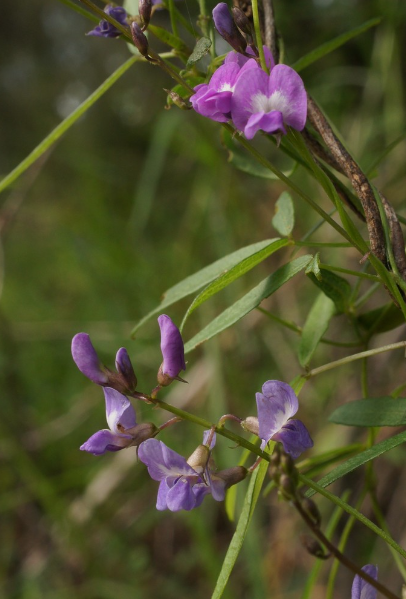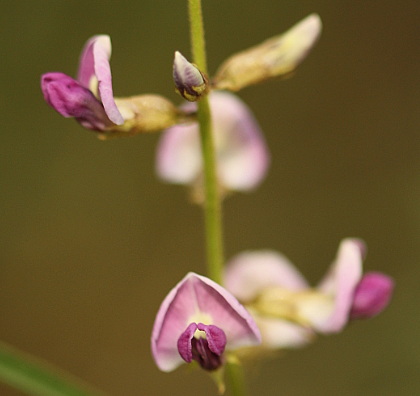Twining Glycine Plant
Twining Glycine (Glycine clandestina) is a moderate-growing vine up to 6 ft, prefers loamy soil, full sun, moderate moisture, and is edible but not medicinal.

Habit
Shrub
Height
2 to 3 m
Growth
Moderate
Soil
Well-drained, Sandy Loam
Shade
Full
Moisture
Moderate
Edible
Yes
Medicinal
No
Origin
Asia
Climatic Condition
Tropical, Subtropical
Temperature (°)
20°C to 30°C
Humidity (%)
60% to 80%
Potting media
50% Loam, 40% Sand, 10% Organic Matter
Fertilizers
Organic Fertilizer
Watering
Regular watering
Plant Weight
2 to 4 kg
Flowering Time
Summer to Fall
Soil Ph level
6.0 to 7.5
Water Ph level
6.0 to 7.0
Soil EC
0.6 to 1.0 mS/cm
Yield Per Plant
20 to 30 kg per plant
NPK ratio
10:10:10
life Span
2 to 3 years
Health Benefits
High in Protein, Antioxidant
Suggested Grow Media or Potting Mix ?
50% peat, 25% compost, 25% sand
Suggested Fertigation/Fertilizers
Fertilize every 2-3 weeks with nitrogen-rich fertilizer.
Common Diseases and Remedies
Leaf Spot, Rust, Downy Mildew, Aphid Infestation, Fusarium Wilt.
Dark spots on leaves, Reddish pustules on leaves, White fungal growth on leaves, Leaf curling and distortion, Wilting and yellowing leaves.
Copper-based fungicides, Fungicides with propiconazole, Fungicides with mancozeb, Fungicides with tebuconazole.
HEALTH BENEFITS
1. Rich Source of Protein
• Many Glycine species, including soybeans, are high in plant-based protein, making them valuable for muscle growth and overall health.
2. Supports Heart Health
• Contains isoflavones and beneficial plant compounds that help lower bad cholesterol (LDL) and support cardiovascular health.
• May help regulate blood pressure due to its potassium content.
3. Improves Bone Health
• Rich in calcium, magnesium, and phosphorus, which are essential for maintaining strong bones.
4. Supports Hormonal Balance
• Some Glycine species, like soybeans, contain phytoestrogens, which can help balance hormone levels in both men and women.
• May be beneficial for menopausal symptoms in women.
5. Aids in Digestion and Gut Health
• High fiber content promotes healthy digestion and prevents constipation.
• Supports gut microbiome health by acting as a prebiotic.
6. Helps Regulate Blood Sugar
• Some species have been found to have low glycemic index (GI) properties, making them suitable for people with diabetes or insulin resistance.
7. Anti-Inflammatory and Antioxidant Properties
• Contains natural antioxidants, which help reduce inflammation and oxidative stress in the body.
8. Supports Brain Function
• Some Glycine species contain compounds that support cognitive function and memory, potentially reducing the risk of neurodegenerative diseases.

